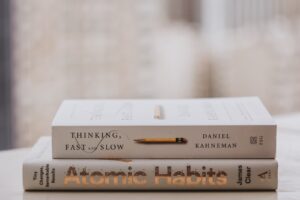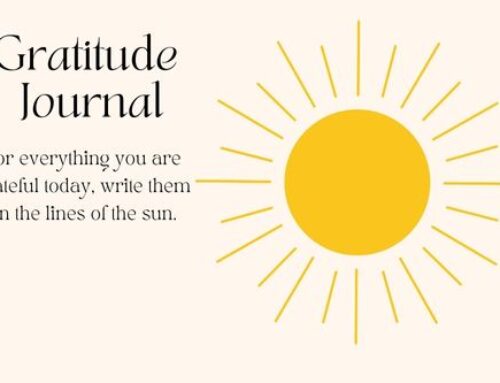Happy New Year everyone! It is now 2024, a new year, a fresh beginning. These first days of the new year are when many people are deciding their New Year’s Resolutions. According to a Forbes survey, the top resolutions for 2024 are: improving fitness, improving finances, improving mental health, losing weight, and improving diet. Rather than being another boring blog about how to stick to your New Year’s Resolutions, I want to talk about habits, and how to create long-lasting habits that will last long beyond New Years.
![]()
The failure rate of resolutions is HIGH: “Researchers suggest that only 9% of Americans that make resolutions complete them. In fact, research goes on to show that 23% of people quit their resolution by the end of the first week, and 43% quit by the end of January.” So instead of jumping in and writing a list of resolutions (ie: things you want to accomplish), I’ve been curious about how to mindfully and realistically approach this time with a view towards long-term success. How to create new habits that will be long-lasting, rather than setting myself up for unrealistic short-term expectations.
Approaching 2024, I’ve been reading James Clear’s book Atomic Habits and reconsidering the traditional “New Year’s Resolution”. At the core of Clear’s writing, he speaks to the difference between focusing on “outcome-based” habits (the thing you want to do) versus “identity-based” habits (the person you want to become). Step “Zero” of habit change is identifying and visualizing who you want to be, and adopting it as your identity. This is the core of “identity-based” habits. For example: This year, I want to improve my fitness- I want to take morning walks (the thing I want to do). Rather than jumping right into this new activity, for the first week I am simply visualizing myself as a morning walker (the person I want to become). Identity-based habits aren’t about what you want to do. It’s about who you want to be. Instead of saying “I want to exercise a few times a week”, say “I AM an athlete.” If your identity is an athlete, then of course you are going to get exercise, because that’s what athletes do. Step Zero is all about changing your mindset.

This identity shift leads to what Clear calls Intrinsic Motivation. He emphasizes how your habits make up your personality, and your personality makes your habits. More simply, Clear writes “every action you take is a vote for the type of person you wish to become.” He also says, “the most practical ways to change who are you, is to change what you do.” Once you’ve decided who you want to be, then you can start achieving actions and making habits to become that person. Once you have identified the personality you wish to embody, then the real work begins.
The first phase to creating a habit is to Make It Obvious. One of the exercises in this section of the book is the Habit Score Card, or habit inventory, where you list out all of your existing positive and negative habits. This list helps to create mindfulness around compulsive and unconscious habits. Clear also suggests using a strategy called “Pointing and Calling” which is a method to become aware of unconscious habits. This may or may not lead to an immediate change of behavior, but at the very least it creates space around the automatic behaviors, and in this space there is the possibility for a new choice (this is part of mindfulness). At the end of the Habit Inventory, we are invited to sit with the lists and consider which we would like to keep, which we would like to let go– all to contribute to the personality we would like to cultivate.
To implement a new habit, Clear suggests making it very specific. Clearly state the day and time, and make a specific space for it. “I will [complete this behavior] at [time] and [location]”. This statement is called an Implementation Intention. Simply by stating the activity with such clarity and specificity, we are more likely to follow through with it. We have made the habit obvious. Another tool to make the habit obvious is called Habit Bundling, wherein we attach a habit we want to incorporate to one we already do. For example, if you want to start a daily meditation habit, and you already make yourself a daily morning cup of coffee, then bundle the meditation with the habit of making coffee. You can say something like, “Before I drink my morning coffee, I will meditate for two minutes.” Lastly, altering the environment is a helpful strategy to (re)train ourselves into new habits. Clear so aptly states, “every habit should have a home.”
Clear’s second phase to habit formation is to Make It Attractive. In this chapter, Clear suggests rewarding good behavior in a strategy he calls Temptation Bundling: pair the action you want to do, with something you need to do. If you need to sort through long-neglected emails, but you want to get pedicures, then sort the virtual correspondence from the nail salon. If I have a favorite audiobook that I’m listening to, maybe I set a rule for myself that I only get to listen to that while I am out walking. “Temptation bundling works by linking an action you want to do with an action you need to do.”
Another strategy for making the new habits attractive is to join a culture or group that embodies the new behavior. For my goal of morning walking, it would benefit me to find a morning walking club or meetup group. The Making it Attractive step also has a psychological component; Clear proposes that we shift from “I have to go for a walk,” to “I get to go for a walk, I get to go outside in the morning, I get to walk around my neighborhood.” In other words, how can we view the new habit as an experience that we desire and believe it? How can this new habit be of benefit to us?
Whether you are setting resolutions or open to creating new habits, I advise that you choose a habit that aligns with what you actually want for yourself. Don’t limit yourself to a resolution or new habit that is based on what everyone else is doing or it’s because you think you should do it. This is just a brief summery of the first half of Atomic Habits. Stay tuned next month for an in-depth look at the second half!



